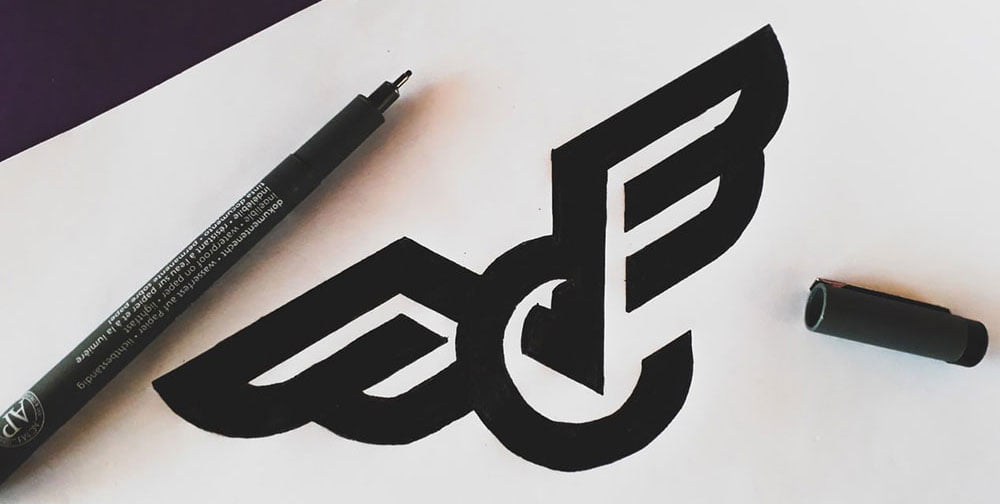
The reach and influence of the internet means that every marketing move a brand makes is seen by a wide audience. Brands have to be much more careful these days, as any online activity can potentially make or break your brand. A recognizable brand logo is essential to identity, since it helps your target market easily recognize you. In fact, there are instances when a brand logo can influence a prospective customer’s buying decision even when they aren’t familiar with the product they’re looking at. Inversely, a bad logo reflects poorly on your business, which is why it’s important to avoid committing these logo design mistakes:
Using Raster Images
A raster image is made up of pixels instead of mathematically precise points. This means that raster images will be pixelated at larger sizes. Remember that much of today’s content is viewed on varying screen sizes, which means that when you use a raster image, it may appear blurry or pixelated, depending on the screen it’s viewed on. Instead of using Photoshop (it uses raster images), use Adobe Illustrator or Corel Draw instead, as these programs use vector images.
Poor Font Choices
It’s important to recognize that different fonts convey different feelings. It’s important to choose a font that reflects your brand. Avoid using fonts that make your logo look unprofessional, like Comic Sans and Papyrus. Simple fonts are always a safe choice, but if you want to find the perfect font for your logo, it needs to match your company’s style while being legible and clean. You might even want to consider hiring a calligrapher if you want a unique font.
Mixing Font Choices
Using more than two fonts will cause your design to lose a precise visual statement. A varying mix of fonts is disorganized and unsightly, as it causes a lack of coordination and coherence. A good rule when mixing two fonts is to use one primary font with a complimentary secondary font. This helps distinguish your foreground from your background and helps your audience focus on the message you’re trying to deliver.
Clashing Colors
Your colors also have to match the message and theme of your company. A dissonant color palette will make your logo come off as disorganized and unsophisticated. Much like fonts, colors also convey certain attributes that you need to reflect in your logo. Bright colors such as pink and yellow suggest fun and youthfulness, while colors such as black and grey demonstrate seriousness and professionalism. Additionally, always use the color chart to help you determine which colors are alright to mix together.
Overly Complicated Designs
It may be tempting to show off your artistic acumen in your logo, but an overly complex logo can be incoherent or even unpleasant. The best logos are simple, versatile, memorable, and they show what your brand is all about at a glance. An overly complicated design hurts your logo’s legibility and memorability, and it also displays a lack of direction, which can muddle the message that you’re trying to communicate
Overly Simplified Designs
On the other hand, an oversimplified design can signify a lack of effort while leaving your potential customers confused at what your logo is trying to portray. A logo without direction creates a notion that the company itself lacks direction. Don’t be afraid to add more detail to your logo, especially during times when so many companies are oversimplifying their logos.
Using Offensive Elements
Considering today’s political climate, there are still a good number of businesses that jeopardize themselves by using elements that suggest sexist, racist, or other inappropriate elements. Even if the use of these elements is meant jokingly, the reach and influence of the internet is immense, and no company would want that kind of infamy. Your logo should reflect what your business is all about, and even when your intentions are pure, it’s easy to misconstrue and misrepresent the things we share on the internet. Stay on the safe side and try to keep your designs as politically neutral as you can.
Copying Competitor Designs
Whether you do this by accident or intentionally, it’s important that you’re able to differentiate your brand from your competitors. When your logo resembles that of your competitors, you’re bound to lose customers when they confuse your products with theirs. A good example of differentiating a brand logo is how the Pepsi logo’s dominant color is blue, while the dominant color on the Coke logo is red. You’re far better off using a contrasting color and brand image from that of your competitors.
Asymmetrical Layouts
While asymmetrical layouts were quite popular in the past for their intrigue, the modern consumer isn’t quite as receptive to these layouts. In fact, it can be unsightly for those who put a premium on perfection. Brand logos that are crooked, misaligned, overlapping, or poorly balanced can be eyersores to people who enjoy a sense of order. Moreover, asymmetrical designs also take more time and money to produce. You’re better off sticking with something safe, simple, and recognizable instead to save money.
Overusing Arcs Over and Under Text
While Amazon’s logo made great use of the arc-under-text design, It doesn’t mean that the same design will have a similar effect on every logo that utilizes it. What differentiates the Amazon logo’s use of the design is that it makes clear that the brand is able to sell and deliver everything from point A to point B. The problem with using arcs in your logo is that many companies have copied this design into their logos, making this element common and unoriginal.
Most business owners already know the importance of a good brand logo. However, not everybody has the time and skill needed to make them as effective as possible. It’s not enough to simply avoid these mistakes. While there’s no harm in trying to master the craft yourself, if you need quick results, you might be better off hiring a business logo design expert to create a logo for your business.




